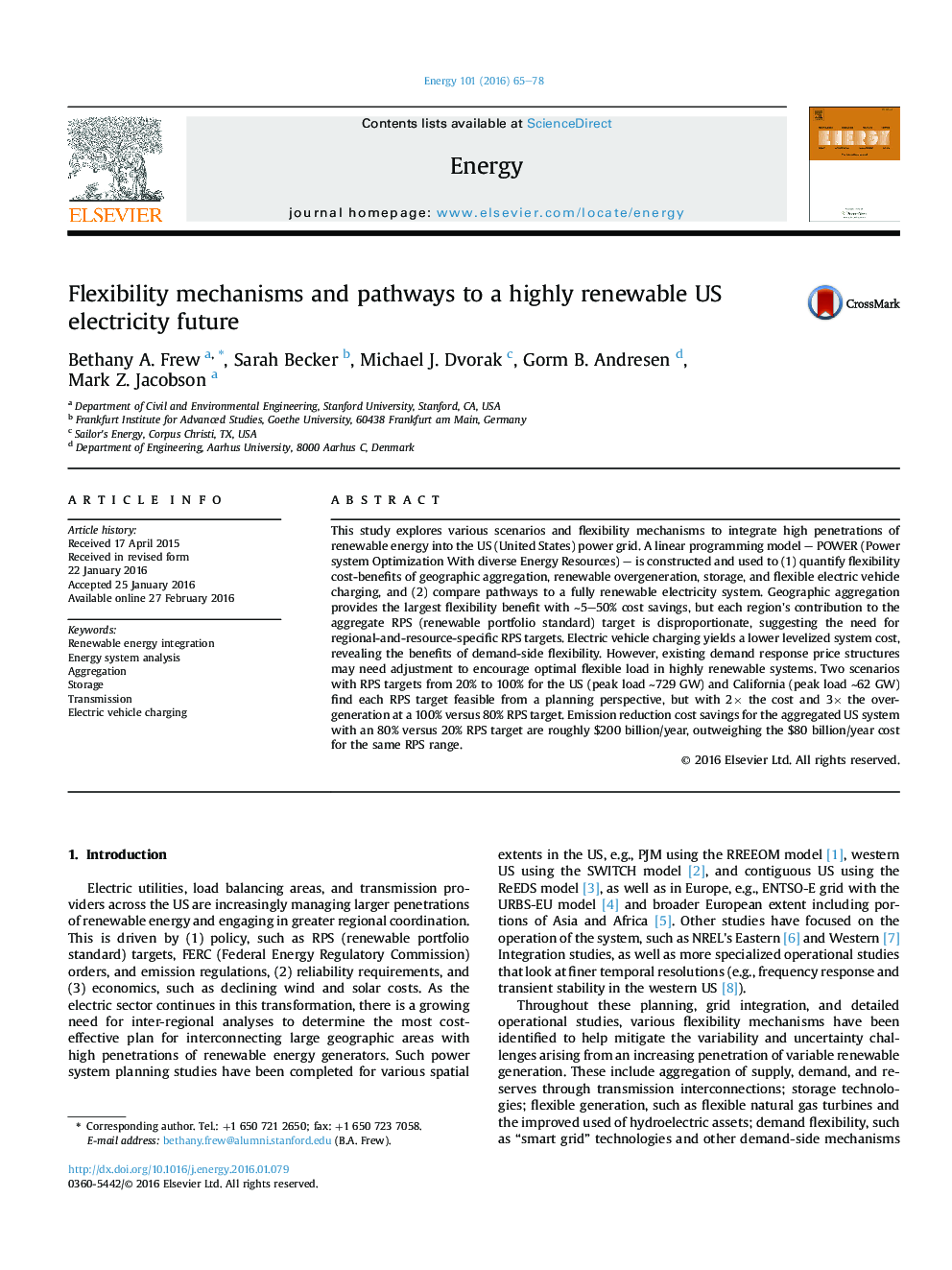| Article ID | Journal | Published Year | Pages | File Type |
|---|---|---|---|---|
| 1731012 | Energy | 2016 | 14 Pages |
•A cost optimization planning model of US electricity system, POWER, is introduced.•Tradeoffs and relative benefits of four flexibility mechanisms are evaluated.•Geographic aggregation has largest cost benefit of flexibility mechanisms considered.•Pathways to fully renewable systems are feasible with high cost and overgeneration.•For an interconnected US, social cost savings outweigh system costs up to 80% RPS.
This study explores various scenarios and flexibility mechanisms to integrate high penetrations of renewable energy into the US (United States) power grid. A linear programming model – POWER (Power system Optimization With diverse Energy Resources) – is constructed and used to (1) quantify flexibility cost-benefits of geographic aggregation, renewable overgeneration, storage, and flexible electric vehicle charging, and (2) compare pathways to a fully renewable electricity system. Geographic aggregation provides the largest flexibility benefit with ∼5–50% cost savings, but each region's contribution to the aggregate RPS (renewable portfolio standard) target is disproportionate, suggesting the need for regional-and-resource-specific RPS targets. Electric vehicle charging yields a lower levelized system cost, revealing the benefits of demand-side flexibility. However, existing demand response price structures may need adjustment to encourage optimal flexible load in highly renewable systems. Two scenarios with RPS targets from 20% to 100% for the US (peak load ∼729 GW) and California (peak load ∼62 GW) find each RPS target feasible from a planning perspective, but with 2× the cost and 3× the overgeneration at a 100% versus 80% RPS target. Emission reduction cost savings for the aggregated US system with an 80% versus 20% RPS target are roughly $200 billion/year, outweighing the $80 billion/year cost for the same RPS range.
